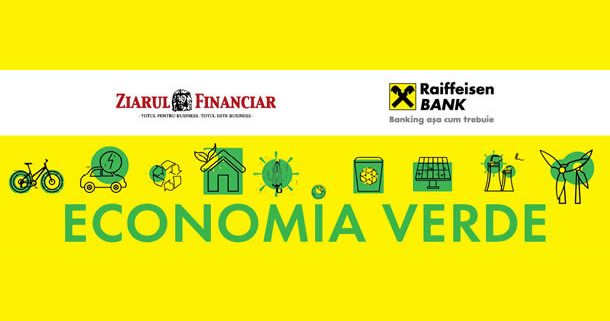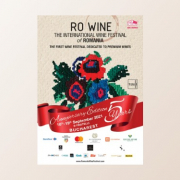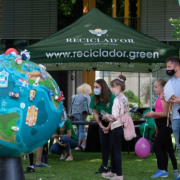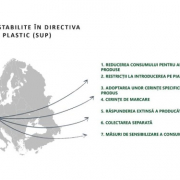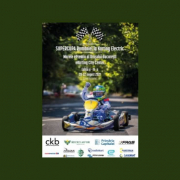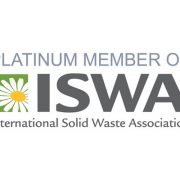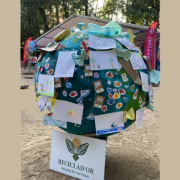FM Green Economy 2021. Recycling – How do we make recycling a way of life and increase the circular economy?
Marius Brînzea, Director of Recycling Strategy, participated in the FM Green Economy 2021 videoconference. Recycling – How do we make recycling a way of life and increase the circular economy?
SPEAKERS
- Alin Neacșu – Executive Director Large Corporates, Raiffeisen Bank
- Adrian Cocan – Project Manager, Laptaria cu Caimac
- Julia Leferman – Director General, Romanian Brewers Association
- Alexandru Stânean – General Manager, Teraplast Group
- Maria Desmirean – Board member, Promateris (formerly Prodplast)
- Alice Nechita – President of the National Soft Drinks Association
- Dragoș Călugăru – General Manager, Ecotic
- Corneliu Pașcu – President , Iridex Group
- Elena Gaspar – President, SNRB (National Battery Recycling System)
- Marius Brînzea – Strategy Director, Reciclad’OR
- Marius Costache – Managing Director, GreenWEEE and GreenGlass
The theme announced at the beginning of the show:
- What can we learn from the Nordic countries on recycling?
- What lifestyle changes can each of us make to contribute to a healthier environment?
- What is the role of the authorities?
- What is the responsibility of private players?
During the FM Green Economy 2021 videoconference, held today, 22 June 2021, Marius Brînzea, Director of Recycling Strategy, made the following clarifications:
- RecicladʹOR is an organisation that takes over the responsibility for recycling packaging waste from producers. We currently have a portfolio of 700 companies across a range of sectors and manage over 20% of the packaging placed on the national market.
- Overall, the pandemic has led to a change in the way we think and perceive life. At the same time it has changed the way we work – we now have a hybrid way of working – as well as a measurable reduction in CO2 pollution. But what is extremely important for the manufacturing sector is that it has once again drawn attention to the need to integrate sustainability into business thinking, and this is because such major changes resulting from climate change lead to reduced productivity, the struggle for resources and therefore increased product costs.
- Education in schools is strictly conditional on the existence of a specific and appropriate structure. Reciclad’OR carries out dozens of campaigns to educate and inform consumers, especially children who represent the future of our society. But we find ourselves in this paradox: the child, having learned from school all the right things to do for separate collection, goes home and finds no appropriate infrastructure. They look at how separate collection is actually done, they see poor communication and then, instead of creating a momentum for recycling, we create disappointment. The correlation between education and the existence of infrastructure is the way to success for recycling.
- The media also has an important role to play in presenting the issues as they are. So I make a recommendation to do a research on the national unity of separate collection systems; first of all the existence of these systems, whether they are functional, whether they are unified, how they communicate within the separate collection systems at national, urban and rural level.
- As a takeover company with a portfolio of 700 companies, we need to have a vision of the future, and I’m talking about the circular economy. The circular economy is a model of production and consumption that involves first sharing assets, reusing, repairing, refurbishing and then recycling materials and products. Because the circular economy is clearly about extending the life of products. It has certain principles: in terms of product design, products should be designed to be reused, recovered, refurbished; in terms of usefulness, to extend the life of products and materials; and in terms of system design, to create circular economy models or circular value chains.
- Faced with this challenge, which will certainly be addressed, because there are all sorts of levers through which companies will be directed in this area, such as the Single Use Plastic Directive, a company has to ask itself whether its current business model can be improved and move into the circularity area or whether it will have to innovate its business model to stay in the market.
- From the perspective of improving the business model, we have found in the national market and globally that the basis is product and material design, because that is where 80% of the circularity of the business comes from. After that there are a multitude of tactics that companies use, such as the use of secondary raw materials, i.e. recycled waste introduced into the next product cycle, minimising consumption, redesigning the supply chain and therefore introducing reverse logistics systems, internal and local production, reducing water consumption, preventing waste pollution, but especially introducing climate change into companies’ risk management policy.
- We are talking about polluting materials or products. Clearly, the degree to which some products or materials pollute depends on us, on how we deal with them after consumption. Without doubt, there are more sustainable materials and therefore product design determines circularity, but design alone is not enough. Companies will also have to rethink their business model. If they have come to market with an innovative product with a design for sustainability, if there is no appropriate business model, the potential for circularity is lost.
- The Single Use Plastic Directive has generated a trend of substitution between plastic and paper. There is this trend to replace plastic with paper especially in the area of disposable packaging. But I would like to draw attention to the fact that some solutions create difficulties in the recycling process and therefore companies need to think holistically across the whole value chain.
- As a citizen, the right approach to consumption in the context of the circular economy means asking myself whether I can prevent waste generation, share this active product, reuse it, renovate it, repair it, and only then think about recycling.
- Obviously we will have circular models as well as linear, classic models, but for which appropriate separate collection infrastructure must be provided.
- At Reciclad’OR, there are several approaches when we talk about education for the circular economy: an internal education, of our own employees; an education of the general public, of consumers; but there is also an education at industry level.
- Thus, from 15 July, we start a training to educate and specialise the 700 companies in our portfolio in what the circular economy means. The training contains elements of circular economy and sustainability, elements of innovation, economic impact analysis. Sustainability means ensuring an optimal ratio between resource consumption, between consumption needs and ensuring the profitability of a company. We have an extensive database of circular economy examples. But we believe the effort must be a collective one. Each of the actors in the market must make a contribution to this process.
- Macroeconomically speaking, the drivers that will lead us towards the circular economy will primarily be government policies. They should first and foremost create opportunities for circularity. Secondly, they should financially stimulate sustainability projects, develop public-private partnerships with a focus on the circular economy.
- We need an appropriate circularity infrastructure that allows an optimal match between supply and demand, between beneficiaries and suppliers. We need digital technology to create those sharing and sharing platforms as well as specific investments for the circular economy but with measurable, monitorable and reportable indicators. Otherwise we are not talking about investment efficiency. Last but not least, management focus on how resources are spent, on increasing productivity and ensuring business profitability in the transition to the circular economy.

